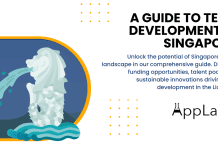Key Takeaways
- Embrace Localized SEO: Optimize for Vietnamese-specific keywords, regional preferences, and platforms like Zalo to connect with local audiences effectively.
- Stay Ahead of Trends: Leverage AI, voice search, and mobile-first indexing to align with Vietnam’s rapidly evolving digital landscape in 2025.
- Prioritize User Experience: Focus on Google’s Core Web Vitals, fast-loading pages, and engaging, culturally relevant content to boost rankings and engagement.
In today’s digital-first world, Search Engine Optimization (SEO) has become a cornerstone of any successful marketing strategy. Businesses across the globe leverage SEO to enhance their online visibility, attract potential customers, and gain a competitive edge.
In Vietnam, a country experiencing a rapid digital transformation, the significance of SEO has grown exponentially.
As we step into 2025, mastering SEO in Vietnam is not just a strategy; it’s a necessity for businesses looking to thrive in an increasingly connected marketplace.

Vietnam’s digital economy is booming, driven by a tech-savvy population, rising smartphone penetration, and widespread internet access. With over 70% of the population expected to be online by 2025, the opportunities for businesses to connect with audiences have never been greater.
However, tapping into this potential requires more than just a basic understanding of SEO—it demands a tailored approach that reflects Vietnam’s unique market dynamics, search habits, and cultural nuances.
Why is SEO Critical for Vietnam in 2025?
The Vietnamese market is distinct in many ways, with consumer behavior heavily influenced by local culture and emerging digital trends. While global SEO principles still apply, businesses operating in Vietnam must adapt their strategies to account for localized factors such as:
- Language and Search Preferences: Vietnamese is a tonal language, and search queries often involve specific linguistic nuances that require precise keyword optimization.
- Mobile Dominance: Vietnam is a mobile-first nation, with the majority of online activities happening on smartphones. Websites that are not mobile-friendly risk losing a significant share of potential traffic.
- Localized Search Engines: While Google dominates the market, localized platforms and apps are gaining traction, necessitating diverse SEO approaches.
As search algorithms become more sophisticated, SEO in 2025 will prioritize user experience, relevancy, and technical excellence. This makes it vital for businesses in Vietnam to stay ahead of the curve by adopting strategies that align with current trends and anticipate future developments.
Key SEO Trends Shaping Vietnam’s Digital Landscape
SEO in Vietnam is evolving rapidly, driven by advancements in technology and changing user expectations. In 2025, some of the most impactful trends include:
- Voice Search Optimization: With the growing use of virtual assistants like Google Assistant and Alexa, optimizing for voice search is no longer optional. Vietnamese users increasingly rely on voice commands, especially for local searches.
- AI-Powered Algorithms: Artificial intelligence is redefining how search engines deliver results. Understanding and adapting to AI-driven algorithms will be crucial for ranking high in search results.
- Video and Visual Content: Vietnamese audiences have a strong preference for video content, particularly on platforms like YouTube and TikTok. Optimizing visual content for search engines can significantly boost engagement and visibility.
What This Guide Offers
This comprehensive guide to SEO in Vietnam for 2025 is designed to equip you with the knowledge and tools necessary to succeed in this dynamic market. Whether you are a small local business or an international enterprise looking to expand your presence in Vietnam, this guide will help you:
- Understand the unique aspects of Vietnam’s digital ecosystem.
- Identify and implement effective local SEO strategies.
- Navigate technical SEO challenges specific to the region.
- Leverage emerging trends to stay ahead of competitors.
From understanding local search behaviors to optimizing your website for mobile users, this guide covers every aspect of SEO tailored to the Vietnamese market. By the end of this blog, you’ll have a clear roadmap for building an SEO strategy that drives results in 2025 and beyond.
So, let’s dive into the complete guide to SEO in Vietnam in 2025 and explore how you can transform your online presence in this fast-growing and competitive market.
A Complete Guide to SEO in the Vietnam in 2025
- Understanding the Vietnamese Digital Landscape
- Key SEO Trends in Vietnam in 2025
- Local SEO Strategies for Vietnamese Businesses
- Technical SEO in Vietnam
- Content Marketing for SEO Success
- E-commerce SEO in Vietnam
- Monitoring and Measuring SEO Success
- Future of SEO in Vietnam
1. Understanding the Vietnamese Digital Landscape
Vietnam’s digital ecosystem has evolved dramatically over the past decade, positioning itself as one of Southeast Asia’s most vibrant markets. In 2025, understanding the nuances of this dynamic digital landscape is essential for businesses to optimize their SEO strategies effectively. This section explores key aspects of Vietnam’s digital world, including internet penetration, search engine preferences, and user behaviors, providing actionable insights for businesses looking to capitalize on this booming market.
Internet Penetration in Vietnam: The Digital Boom
Vietnam’s internet penetration continues to rise, creating unprecedented opportunities for online businesses.
- Key Statistics for 2025:
- Over 70% of Vietnam’s population, approximately 73 million people, are active internet users.
- The average Vietnamese user spends more than 6 hours per day online, with mobile usage dominating.
- Mobile-First Nation:
- Approximately 96% of internet users access the web through smartphones.
- Example: Businesses with mobile-optimized websites, such as Shopee Vietnam, see significantly higher engagement rates.
- Rural Connectivity Growth:
- Initiatives like Vietnam’s National Digital Transformation Program are bridging the digital divide, with rural areas seeing increased access to 4G and 5G networks.
- Businesses targeting rural regions with lightweight, fast-loading websites can gain a competitive advantage.
Popular Search Engines in Vietnam
Although Google remains the dominant search engine in Vietnam, understanding the role of alternative platforms can enhance a business’s SEO strategy.
- Google’s Market Share:
- Google accounts for over 90% of all search queries in Vietnam, making it the primary focus for SEO efforts.
- Features like Google Maps and local pack results are critical for local businesses.
- Emerging Alternatives:
- Cốc Cốc: A homegrown Vietnamese search engine with localized features such as built-in translation and video downloading.
- Example: Businesses optimizing for Cốc Cốc by incorporating Vietnamese-language keywords and localized content can gain visibility among niche audiences.
- Social Media Platforms as Search Engines:
- Platforms like Facebook, TikTok, and YouTube are increasingly being used for search queries, particularly for products and reviews.
- Example: A fashion retailer using TikTok SEO to target young Vietnamese consumers can rank higher in searches for trending styles.
User Behavior and Local Preferences
Vietnamese online behavior is shaped by cultural influences and preferences, which directly impact SEO strategies.
- Search Habits:
- Short, specific queries are common, with users prioritizing quick, relevant answers.
- Example: “Cửa hàng cà phê đẹp tại Hà Nội” (“Beautiful coffee shops in Hanoi”) is a frequently searched phrase by locals.
- Mobile Search Dominance:
- Mobile searches account for over 75% of total search traffic.
- Optimizing for local mobile searches, such as “gần đây” (“near me”), is crucial for businesses targeting walk-in customers.
- Preference for Local Content:
- Vietnamese users prefer content that is localized and written in their native language.
- Example: Websites like Lazada Vietnam outperform international competitors by offering Vietnamese-language interfaces and tailored deals.
The Role of Social Media in the Vietnamese Digital Landscape
Social media platforms are integral to Vietnam’s online ecosystem and serve as important tools for SEO.
- Most Popular Platforms:
- Facebook: The leading social network in Vietnam with over 60 million active users.
- TikTok: Rapidly gaining traction, particularly among younger audiences, for video-based searches.
- Zalo: A Vietnamese messaging app with e-commerce and search features, used heavily for business communication.
- Integrating Social Media with SEO:
- Optimize business profiles for searchability on platforms like Facebook and Zalo.
- Example: A restaurant with a well-maintained Facebook page featuring menus and reviews can appear in search results for “best bánh mì near me.”
- Social Signals for SEO:
- High engagement rates (likes, shares, comments) on social media content boost credibility and indirectly impact search rankings.
E-commerce Growth and Its Impact on SEO
E-commerce has transformed Vietnam’s digital landscape, creating unique SEO opportunities.
- Rising E-commerce Platforms:
- Leading platforms like Shopee, Lazada, and Tiki dominate online shopping in Vietnam.
- SEO strategies for e-commerce should focus on optimizing product descriptions, metadata, and reviews.
- Consumer Preferences in 2025:
- Vietnamese shoppers value discounts, fast delivery, and trusted reviews.
- Example: Including keywords like “giảm giá” (“discount”) and “giao hàng nhanh” (“fast delivery”) can boost e-commerce rankings.
- Mobile Shopping Trends:
- Over 70% of online purchases are made via mobile devices, emphasizing the need for responsive e-commerce websites.
Conclusion
Understanding Vietnam’s digital landscape in 2025 requires recognizing its unique blend of mobile-first behavior, localized preferences, and growing reliance on e-commerce and social media. By tailoring SEO strategies to these trends and preferences, businesses can effectively tap into this fast-growing market, ensuring a competitive edge in the Vietnamese digital economy.
2. Key SEO Trends in Vietnam in 2025
As Vietnam’s digital landscape continues to expand, staying ahead of emerging SEO trends is crucial for businesses seeking to maximize their online visibility. In 2025, several key trends are shaping the SEO ecosystem in Vietnam, ranging from the increasing use of AI to the growing importance of video content and voice search. This section highlights these trends and offers actionable strategies, supported by relevant examples, to help businesses optimize their digital presence.
1. Voice Search Optimization
Voice search is transforming how Vietnamese users interact with search engines, thanks to the rising adoption of virtual assistants like Google Assistant and local integrations in Vietnamese language.
- Growth of Voice Search in Vietnam:
- Over 40% of Vietnamese internet users rely on voice commands, particularly for local queries such as “nhà hàng gần đây” (“restaurants near me”).
- Voice search adoption is higher among younger demographics and in urban areas.
- Key Optimization Strategies:
- Use natural language keywords that match how people speak. Example: Optimize for conversational phrases like “chỗ mua điện thoại giá rẻ” (“where to buy cheap phones”) instead of just “cheap phones.”
- Create FAQ pages that answer common voice queries concisely.
- Leverage structured data to ensure featured snippets and quick answers appear in voice search results.
- Example: A local spa in Ho Chi Minh City optimized for phrases like “spa thư giãn gần tôi” (“relaxing spa near me”) to rank for voice searches, resulting in a 25% increase in local foot traffic.
2. AI-Powered SEO and Personalization
Artificial intelligence is redefining search engine algorithms and how results are displayed, focusing on personalization and user intent.
- AI’s Impact on Search:
- Google’s AI-powered features like MUM (Multitask Unified Model) and BERT (Bidirectional Encoder Representations from Transformers) are enhancing contextual understanding of Vietnamese language and queries.
- Personalized results are tailored to users’ locations, search history, and preferences.
- Optimization Tips:
- Focus on intent-driven content: Create blogs and pages that address user needs (e.g., “Hướng dẫn sửa máy tính tại nhà” or “DIY computer repair guide”).
- Improve click-through rates (CTR) with compelling meta titles and descriptions, as AI values user engagement metrics.
- Utilize tools like Google Search Console and SEMrush to analyze performance and adjust strategies.
- Example: A travel agency used AI-driven keyword tools to rank for “du lịch biển giá rẻ 2025” (“cheap beach travel 2025”), aligning with user searches for affordable holiday options.
3. Video and Visual Content Domination
Vietnamese audiences love video content, with platforms like YouTube, TikTok, and Facebook being major players in the country’s digital space.
- Rise of Video SEO:
- Video consumption accounts for nearly 80% of all internet traffic in Vietnam.
- Younger audiences prefer short, engaging video formats over text-heavy content.
- SEO Best Practices for Video:
- Optimize video titles, descriptions, and tags with relevant Vietnamese keywords (e.g., “cách làm bánh mì tại nhà” or “how to make bánh mì at home”).
- Include transcripts and captions to improve accessibility and keyword targeting.
- Host videos on platforms like YouTube and embed them on websites to increase dwell time.
- Example: A Vietnamese food blogger created YouTube tutorials for popular dishes and ranked on Google for related recipes, attracting both domestic and international audiences.
4. Mobile-First Indexing and User Experience
Vietnam’s mobile-first behavior means websites must prioritize mobile responsiveness to rank well in search engines.
- Impact of Mobile-First Indexing:
- Google evaluates and indexes websites based on their mobile versions.
- Slow-loading websites or poor mobile designs lead to higher bounce rates, negatively impacting SEO.
- Mobile Optimization Tips:
- Ensure websites load in under 3 seconds using tools like Google PageSpeed Insights.
- Implement responsive design for seamless viewing across all devices.
- Use AMP (Accelerated Mobile Pages) to boost speed for mobile users.
- Example: An e-commerce site optimized its mobile experience and reduced loading times by 50%, leading to a 30% increase in organic traffic.
5. Local SEO and Hyper-Localization
As more Vietnamese users search for nearby services, local SEO is becoming a critical focus.
- Importance of Local SEO:
- Over 60% of searches in Vietnam contain location-based keywords like “gần tôi” (“near me”).
- Features like Google My Business (GMB) and local directories play a pivotal role.
- Strategies for Success:
- Optimize GMB listings with accurate information, including business hours, contact details, and high-quality photos.
- Collect and respond to customer reviews to boost credibility.
- Use local keywords: For example, a café in Hanoi might target “quán cà phê đẹp ở Hà Nội” (“beautiful coffee shop in Hanoi”).
- Example: A boutique hotel in Da Nang improved its rankings by targeting keywords like “khách sạn ven biển Đà Nẵng” (“beachfront hotel Da Nang”) and optimizing GMB for local visibility.
6. Focus on E-E-A-T (Experience, Expertise, Authority, Trustworthiness)
Google’s E-E-A-T guidelines (Experience, Expertise, Authority, and Trustworthiness) are crucial for content ranking in 2025.
- Key Considerations for E-E-A-T:
- Publish content written by experts in the field, especially for sensitive topics like health or finance.
- Include author bios and references to build authority.
- Update content regularly to maintain relevance and accuracy.
- Example: A financial advisory blog in Vietnam increased organic traffic by 40% by publishing detailed guides on investment strategies and citing credible sources.
7. Zero-Click Searches and Featured Snippets
Zero-click searches, where users get answers directly from search results without clicking on a website, are becoming more prevalent.
- Optimizing for Zero-Click Searches:
- Provide concise, clear answers to frequently asked questions.
- Use structured data to enhance chances of appearing in featured snippets.
- Format content with headings, bullet points, and lists for easy scanning.
- Example: A Vietnamese tech retailer optimized its FAQ page for questions like “Làm thế nào để chọn laptop tốt?” (“How to choose a good laptop?”) and secured the featured snippet for related queries.
8. Sustainable SEO Practices
As awareness of environmental issues grows, businesses in Vietnam are incorporating sustainability into their branding, including SEO.
- Green SEO Strategies:
- Optimize website performance to reduce carbon footprints by improving efficiency.
- Highlight sustainable practices in content and keywords (e.g., “sản phẩm thân thiện môi trường” or “eco-friendly products”).
- Example: An online clothing store promoting sustainable fashion used “quần áo tái chế” (“recycled clothing”) as a targeted keyword, appealing to environmentally conscious consumers.
Conclusion
The SEO landscape in Vietnam is rapidly evolving in 2025, driven by technological advancements, changing user behaviors, and a mobile-first mindset. By embracing trends such as voice search optimization, AI-driven personalization, video SEO, and local SEO, businesses can stay ahead of the competition and connect with Vietnam’s growing digital audience. Whether targeting local consumers or reaching global markets, these trends provide the foundation for a robust and future-proof SEO strategy.
3. Local SEO Strategies for Vietnamese Businesses
Local SEO has become a game-changer for businesses in Vietnam, enabling them to attract customers within their immediate vicinity and establish a strong community presence. With search engines increasingly prioritizing local results, especially on mobile devices, understanding and implementing effective local SEO strategies is essential for Vietnamese businesses in 2025. This section dives into actionable tactics, supported by examples, to help businesses dominate local searches in Vietnam.
1. Optimize Google My Business (GMB) Listings
Google My Business (GMB) is the cornerstone of local SEO and a crucial tool for businesses targeting Vietnamese audiences.
- Create and Verify Your Listing:
- Ensure your GMB profile is fully filled out with accurate business information, including:
- Business name, address, and phone number (NAP).
- Operating hours, photos, and website link.
- Verify your listing to maximize its visibility on Google Maps and local search results.
- Ensure your GMB profile is fully filled out with accurate business information, including:
- Add Local Keywords:
- Use relevant Vietnamese keywords in your GMB description, such as:
- “quán ăn ngon ở Hà Nội” (“delicious restaurants in Hanoi”).
- Use relevant Vietnamese keywords in your GMB description, such as:
- Leverage Reviews:
- Encourage satisfied customers to leave reviews, as they heavily influence rankings and trustworthiness.
- Example: A hair salon in Ho Chi Minh City gained 50% more bookings by responding to customer reviews and optimizing its GMB listing with keywords like “salon tóc đẹp tại Sài Gòn” (“beautiful hair salon in Saigon”).
2. Focus on NAP Consistency
Consistency across all online platforms is critical for establishing credibility in local SEO.
- Maintain Uniform Details:
- Ensure your business name, address, and phone number (NAP) are consistent across:
- GMB listings.
- Social media platforms (e.g., Facebook, Zalo).
- Local directories such as Foody.vn or VietnamYellowPages.
- Ensure your business name, address, and phone number (NAP) are consistent across:
- Audit Regularly:
- Use tools like Moz Local or BrightLocal to identify and fix inconsistencies.
- Example: A coffee shop in Da Nang saw a 20% increase in local traffic after correcting outdated NAP details on multiple directories.
3. Localized Content Creation
Creating content tailored to Vietnamese audiences is vital for boosting local search rankings.
- Write Location-Specific Blog Posts:
- Examples include:
- “Top địa điểm du lịch tại Huế” (“Top tourist spots in Hue”).
- “Hướng dẫn tìm quán ăn ngon ở Đà Nẵng” (“Guide to finding good restaurants in Da Nang”).
- Examples include:
- Highlight Local Events and Activities:
- Participate in or sponsor local events and write about them on your website.
- Example: A bakery in Hanoi boosted website visits by 35% by creating a blog about “Bánh trung thu truyền thống tại Hà Nội” (“Traditional mooncakes in Hanoi”).
- Use Local Keywords Strategically:
- Incorporate phrases that locals use in search queries, such as “gần đây” (“near me”) or specific district names.
4. Leverage Location Pages on Your Website
For businesses with multiple locations, creating dedicated pages for each branch is a highly effective strategy.
- Optimize Each Page with Unique Content:
- Include:
- Store address, contact details, and hours of operation.
- Testimonials and images from that location.
- Example: A retail chain with stores in Hanoi, Ho Chi Minh City, and Da Nang created separate pages for each city, optimizing them with local keywords and boosting search rankings for location-based queries.
- Include:
- Add Embedded Maps:
- Embed Google Maps for easy navigation.
- Highlight Local Promotions:
- Feature branch-specific offers and events to attract local customers.
5. Mobile Optimization for Local Searches
Vietnam is a mobile-first nation, making mobile optimization essential for local SEO success.
- Prioritize Mobile Responsiveness:
- Ensure your website is mobile-friendly and provides a seamless browsing experience.
- Example: A fashion boutique in Ho Chi Minh City saw an 80% increase in mobile traffic after redesigning its site for better usability on smartphones.
- Use “Near Me” Optimization:
- Optimize for “gần tôi” queries, such as “quán cà phê gần tôi” (“coffee shop near me”).
- Include location data in meta descriptions and content.
6. Build Local Backlinks
Earning backlinks from reputable local websites can significantly boost your local search rankings.
- Partner with Local Businesses:
- Collaborate with complementary businesses to exchange backlinks.
- Example: A travel agency partnered with a local tour operator in Hoi An, linking to each other’s websites and boosting their visibility.
- Submit to Local Directories:
- List your business on popular Vietnamese directories like Foody.vn, VietnamWorks, or Zalo Business.
- Engage in Community Initiatives:
- Sponsor local events or charities and request backlinks from their websites.
7. Use Structured Data Markup
Schema markup helps search engines understand your business better and display rich results.
- Implement Local Business Schema:
- Include details like address, opening hours, and customer reviews.
- Tools like Google’s Structured Data Markup Helper make implementation easy.
- Enhance SERP Visibility:
- Rich results can include star ratings, event times, and product availability.
- Example: A bookstore in Hanoi implemented structured data and appeared in rich snippets for “sách tiếng Việt tại Hà Nội” (“Vietnamese books in Hanoi”).
8. Social Media Integration for Local SEO
Social media platforms like Facebook and Zalo are powerful tools for improving local SEO.
- Optimize Social Media Profiles:
- Include consistent NAP details, links to your website, and relevant keywords.
- Example: A restaurant in Da Nang regularly posts updates about local dishes and events, ranking higher for food-related queries.
- Engage with Local Communities:
- Participate in Facebook Groups or Zalo communities relevant to your business niche.
- Promote Local Deals and Events:
- Use geo-targeted ads to reach specific audiences.
9. Monitor and Respond to Customer Reviews
Online reviews are a critical ranking factor for local SEO and influence customer decisions.
- Encourage Positive Reviews:
- Politely ask satisfied customers to leave reviews on platforms like GMB, Facebook, or TripAdvisor.
- Respond to All Reviews:
- Address negative feedback professionally and thank customers for positive feedback.
- Example: A boutique hotel in Nha Trang improved its online reputation and search rankings by consistently engaging with guest reviews.
10. Track Performance with Local SEO Tools
Monitoring your local SEO efforts ensures continuous improvement and success.
- Use Analytics Tools:
- Google Analytics: Track local traffic and user behavior.
- GMB Insights: Measure profile performance, including calls, website visits, and directions requests.
- Local SEO Platforms:
- BrightLocal: Monitor rankings, reviews, and citations.
- Moz Local: Ensure accurate business listings across directories.
Conclusion
In 2025, local SEO is a vital strategy for Vietnamese businesses aiming to attract nearby customers and thrive in competitive markets. By optimizing GMB listings, creating localized content, leveraging mobile-first strategies, and building strong local backlinks, businesses can significantly enhance their visibility in local search results. Adapting to these strategies not only boosts online rankings but also strengthens community connections, driving long-term success.
4. Technical SEO in Vietnam
In the ever-evolving digital landscape, technical SEO remains a fundamental pillar of search engine optimization. For Vietnamese businesses in 2025, ensuring a technically sound website is essential to meet search engine requirements and provide a seamless user experience. This section explores critical aspects of technical SEO tailored for the Vietnamese market, highlighting actionable strategies and examples to enhance website performance and search rankings.
1. Website Speed Optimization
Fast-loading websites are crucial for both user satisfaction and search engine rankings, especially in Vietnam, where mobile internet use dominates.
- Importance of Speed:
- A study shows that a 1-second delay in page load time can reduce conversions by 7%.
- Google prioritizes faster websites, especially for mobile-first indexing.
- Optimization Strategies:
- Use tools like Google PageSpeed Insights and GTmetrix to measure website speed.
- Compress images with tools such as TinyPNG or ShortPixel to reduce file sizes without compromising quality.
- Enable browser caching to reduce server load.
- Example: A Vietnamese e-commerce website reduced its load time from 5 seconds to 2 seconds by implementing lazy loading for images, leading to a 35% increase in organic traffic.
2. Mobile-First Optimization
With over 75% of internet users in Vietnam accessing the web via mobile devices, mobile-first optimization is non-negotiable.
- Key Focus Areas:
- Ensure responsive web design that adapts seamlessly to various screen sizes.
- Prioritize touch-friendly navigation, such as larger buttons and easy-to-click links.
- Avoid intrusive interstitials (e.g., pop-ups) that can disrupt user experience.
- Testing and Tools:
- Use Google’s Mobile-Friendly Test to check and improve mobile usability.
- Example: A Vietnamese travel agency improved its mobile usability score by redesigning its website, resulting in a 50% reduction in bounce rate for mobile users.
3. Crawlability and Indexability
Ensuring that search engines can easily crawl and index your website is vital for visibility.
- Create a Comprehensive Sitemap:
- Generate XML sitemaps using tools like Screaming Frog or Yoast SEO.
- Submit the sitemap to Google Search Console and Bing Webmaster Tools.
- Optimize Robots.txt File:
- Allow search engines to access critical pages while blocking irrelevant sections (e.g., admin panels).
- Fix Broken Links:
- Regularly check for and resolve broken links using tools like Ahrefs or SEMrush.
- Example: A Vietnamese blog on local cuisine saw a 20% increase in indexed pages by submitting a new sitemap after restructuring its website.
4. HTTPS and Website Security
A secure website is essential for user trust and search engine rankings.
- Migrate to HTTPS:
- Ensure your website uses an SSL certificate to encrypt data and display the padlock icon in the browser.
- Websites without HTTPS are marked as “not secure,” deterring users and impacting rankings.
- Regular Security Audits:
- Use tools like Sucuri or Qualys SSL Labs to check for vulnerabilities.
- Example: An education platform in Vietnam increased its organic traffic by 15% after switching to HTTPS and addressing security issues flagged during a technical audit.
5. Structured Data and Schema Markup
Implementing structured data helps search engines understand your website content better and display rich results.
- Types of Schema Markup:
- Local business schema for stores and services.
- Product schema for e-commerce platforms to showcase product details.
- FAQ schema to enhance visibility in search results for common queries.
- Tools for Implementation:
- Use Google’s Structured Data Markup Helper to create and validate schema markup.
- Example: A Vietnamese electronics retailer used product schema markup to display prices and availability in search results, leading to a 30% increase in click-through rates (CTR).
6. Core Web Vitals Optimization
Core Web Vitals are a set of metrics Google uses to measure user experience. These include:
- Largest Contentful Paint (LCP):
- Time taken for the largest visible content to load. Target: Less than 2.5 seconds.
- First Input Delay (FID):
- Time before a user can interact with the website. Target: Less than 100 milliseconds.
- Cumulative Layout Shift (CLS):
- Measures unexpected layout shifts. Target: Less than 0.1.
- Optimization Tips:
- Minimize JavaScript execution.
- Use a content delivery network (CDN) to serve content faster.
- Optimize font loading by preloading key fonts.
- Example: A Vietnamese news portal improved its Core Web Vitals scores, reducing bounce rates by 40% and increasing session durations.
7. Multilingual and Regional SEO
For businesses targeting both local and international audiences, properly implementing multilingual SEO is essential.
- Hreflang Tags:
- Use hreflang attributes to signal content language and region to search engines.
- Example: Vietnamese (vi-vn) vs. English for Vietnam (en-vn).
- Localized Content:
- Translate and localize content accurately to resonate with Vietnamese audiences.
- Avoid using machine translations alone, as they can lead to poor-quality content.
- Example: An international hotel chain optimized its Vietnamese website with hreflang tags, resulting in better rankings for searches like “khách sạn ở Hà Nội” (“hotels in Hanoi”).
8. Handling Duplicate Content
Duplicate content can harm rankings, so addressing it is a priority for technical SEO.
- Common Causes in Vietnam:
- Content copied across multiple directories or platforms.
- Similar products with slight variations on e-commerce sites.
- Solutions:
- Use canonical tags to signal the primary version of a page.
- Consolidate duplicate pages or use 301 redirects.
- Example: A fashion retailer eliminated duplicate product pages by implementing canonical tags, improving its overall search rankings.
9. Image Optimization
Images play a significant role in user engagement but can also slow down websites if not optimized.
- Best Practices for Image SEO:
- Use descriptive file names in Vietnamese (e.g., “ao-dai-truyen-thong.jpg” for “traditional ao dai”).
- Add alt text with relevant keywords for accessibility and SEO benefits.
- Compress images to reduce file sizes.
- Example: A tourism website increased image search traffic by optimizing alt tags and filenames for Vietnamese attractions like “vịnh Hạ Long” (“Ha Long Bay”).
10. Regular Technical Audits
Routine technical SEO audits ensure your website remains optimized as search engine algorithms evolve.
- Tools for Audits:
- Screaming Frog: Crawl your site to detect errors.
- Google Search Console: Monitor performance and fix indexing issues.
- Ahrefs: Identify broken links and other technical problems.
- Key Focus Areas:
- Broken links, duplicate content, and missing meta tags.
- Site architecture and internal linking structures.
- Example: A Vietnamese online bookstore conducted a technical audit, resolving errors that led to a 25% increase in organic traffic.
Conclusion
In Vietnam’s dynamic SEO landscape of 2025, technical SEO remains a critical foundation for digital success. By focusing on website speed, mobile optimization, structured data, and regular audits, businesses can ensure they stay competitive and meet user expectations. These strategies not only improve rankings but also enhance the overall user experience, driving sustainable growth in the Vietnamese market.
5. Content Marketing for SEO Success
Content marketing plays a pivotal role in achieving SEO success, especially in a culturally rich and digitally evolving market like Vietnam. By creating high-quality, relevant, and localized content, businesses can attract, engage, and convert Vietnamese audiences while improving search engine rankings. This section explores effective content marketing strategies tailored to Vietnam in 2025, supported by actionable insights and examples.
1. Prioritize Localized and Culturally Relevant Content
Understanding Vietnam’s diverse cultural nuances and preferences is key to resonating with the target audience.
- Localize Content for Regional Audiences:
- Use local dialects or regional terms where appropriate, such as “chợ Bến Thành” for Ho Chi Minh City audiences.
- Address region-specific trends, like eco-tourism in Da Nang or street food culture in Hanoi.
- Highlight Vietnamese Traditions and Festivals:
- Create content around popular celebrations like Tet (Lunar New Year) or Mid-Autumn Festival.
- Example: A confectionery brand created a blog series about traditional Tet delicacies, boosting organic traffic by 40%.
- Use Visual Storytelling:
- Incorporate images and videos featuring local landmarks, people, and traditions.
- Example: A travel agency produced a YouTube series showcasing hidden gems in Vietnam, increasing video views and website traffic.
2. Focus on Evergreen Content with a Local Twist
Evergreen content ensures long-term traffic while localizing it caters to Vietnamese audiences.
- Examples of Evergreen Topics:
- “How to Make Traditional Vietnamese Coffee”
- “Guide to Exploring Ha Long Bay”
- Add a Fresh Perspective:
- Update evergreen content with the latest trends, such as eco-friendly travel options in Vietnam.
- Example: A lifestyle blog published an evergreen post about “5 Must-Try Dishes in Hanoi” and updated it yearly with trending restaurants, maintaining high search rankings.
3. Leverage Video Content for Engagement
Video consumption in Vietnam is on the rise, with platforms like YouTube and TikTok dominating.
- Short-Form Videos:
- Create bite-sized tutorials, product reviews, or event highlights for TikTok and Instagram.
- Example: A beauty brand gained thousands of followers by sharing quick skincare routines tailored to Vietnamese weather.
- Long-Form Educational Content:
- Publish in-depth guides or behind-the-scenes videos on YouTube.
- Example: A Vietnamese tech company produced tutorials on using their software in Vietnamese, leading to higher adoption rates.
- Optimize for Search:
- Include local keywords in video titles, descriptions, and captions, such as “du lịch giá rẻ tại Việt Nam” (“budget travel in Vietnam”).
4. Create Data-Driven Content
Vietnamese audiences appreciate content that provides actionable insights backed by data.
- Conduct Local Surveys or Studies:
- Gather data on consumer trends in Vietnam and present it through engaging infographics or articles.
- Example: A real estate company published a report on property investment trends in Hanoi, attracting backlinks from industry websites.
- Use Visualizations:
- Simplify complex data with charts, graphs, or interactive visuals.
- Highlight Local Statistics:
- Include Vietnam-specific figures to increase relevance and authority.
5. Develop Niche-Specific Content
Targeting niche markets allows businesses to connect with specific audience segments.
- Identify Untapped Niches:
- Explore interests like vegan food in Vietnam, sustainable fashion, or technology startups.
- Collaborate with Influencers:
- Partner with micro-influencers who specialize in these niches.
- Example: A vegan restaurant worked with a food blogger to create content about plant-based dining in Saigon, driving significant local engagement.
- Long-Tail Keywords:
- Use specific search terms like “cửa hàng quần áo bền vững ở Hà Nội” (“sustainable clothing stores in Hanoi”) to target niche queries.
6. Optimize for Voice Search
Voice search is becoming increasingly popular in Vietnam due to widespread smartphone use and tools like Google Assistant.
- Use Conversational Language:
- Write content that mimics natural speech patterns, such as “Where can I find affordable pho near me?”
- Focus on FAQs:
- Create FAQ pages addressing common queries related to your niche.
- Example: A restaurant in Ho Chi Minh City optimized its content for “Quán ăn ngon gần đây” (“delicious restaurants near me”), appearing in voice search results and increasing foot traffic.
7. Invest in Content Clusters and Pillar Pages
Content clusters help organize and interlink related articles, improving SEO and user experience.
- Structure Your Content:
- Create a central pillar page, such as “The Ultimate Guide to Traveling in Vietnam,” and link to supporting posts like:
- “Top Beaches in Vietnam”
- “Vietnam’s Best Street Food Markets”
- Create a central pillar page, such as “The Ultimate Guide to Traveling in Vietnam,” and link to supporting posts like:
- Internal Linking Strategy:
- Ensure all supporting articles link back to the main pillar page.
- Example: A tourism website developed a travel guide for Vietnam, interlinking with detailed posts on specific cities, leading to a 50% increase in time spent on the site.
8. User-Generated Content (UGC) for Local Engagement
UGC is highly effective for building trust and engaging local audiences.
- Encourage Reviews and Testimonials:
- Request customers to share their experiences and feature them on your website or social media.
- Social Media Campaigns:
- Run contests encouraging users to submit photos or videos using your products.
- Example: A Vietnamese fashion brand launched a “Style Your Ao Dai” campaign, receiving hundreds of submissions and gaining widespread visibility.
- Leverage Community Content:
- Highlight user reviews and discussions from platforms like Foody.vn or Facebook Groups.
9. Promote Interactive Content
Interactive content increases user engagement and keeps visitors on your website longer.
- Popular Formats:
- Quizzes: “Which Vietnamese Dish Matches Your Personality?”
- Polls: “What’s Your Favorite Beach in Vietnam?”
- Calculators: “Estimate the Cost of Your Trip to Vietnam.”
- Example: A real estate website introduced a “Rent vs. Buy Calculator,” which drove significant traffic from local search queries.
10. Monitor Performance and Adapt
Analyzing content performance helps refine strategies for better results.
- Track Metrics:
- Use Google Analytics to monitor page views, bounce rates, and time on page.
- Check keyword rankings using SEMrush or Ahrefs.
- A/B Testing:
- Experiment with headlines, CTAs, or content formats to see what resonates best with Vietnamese audiences.
- Example: A tech blog analyzed its top-performing posts and created similar content on trending topics like AI applications in Vietnam, doubling its organic traffic.
Conclusion
Content marketing in Vietnam in 2025 revolves around creating high-quality, localized, and engaging content tailored to the preferences of Vietnamese audiences. From leveraging video and data-driven insights to optimizing for voice search and fostering user-generated content, businesses can harness these strategies to achieve SEO success. By continually analyzing performance and adapting to evolving trends, Vietnamese companies can establish themselves as authoritative voices in their industries and achieve sustainable growth through content marketing.
6. E-commerce SEO in Vietnam
The e-commerce industry in Vietnam continues to grow rapidly, with platforms like Shopee, Lazada, Tiki, and Sendo dominating the market. As competition intensifies, optimizing e-commerce websites for SEO is no longer optional but essential for businesses aiming to attract organic traffic and increase sales. This section explores key strategies for e-commerce SEO in Vietnam, with examples and actionable insights.
1. Optimize Product Pages for Vietnamese Audiences
Product pages are the backbone of any e-commerce site and require careful optimization to rank well and drive conversions.
- Use Localized Keywords:
- Conduct keyword research using tools like Google Keyword Planner, Ahrefs, or local platforms.
- Include Vietnamese keywords, such as “áo dài truyền thống giá rẻ” (“cheap traditional ao dai”).
- Write Descriptive Product Titles:
- Include product names, key attributes, and relevant keywords.
- Example: Instead of “Áo dài,” use “Áo dài truyền thống nữ màu đỏ đẹp” (“Beautiful red traditional ao dai for women”).
- Compelling Product Descriptions:
- Focus on features, benefits, and use cases.
- Add storytelling elements that resonate with Vietnamese cultural values.
- Example: “Celebrate Tet in style with our handcrafted ao dai, inspired by traditional Vietnamese patterns.”
- Optimize Images:
- Use descriptive file names (e.g., “giay-the-thao-nam.jpg”) and alt texts with Vietnamese keywords.
2. Focus on Mobile Optimization
With over 75% of e-commerce transactions in Vietnam occurring on mobile devices, mobile optimization is crucial.
- Responsive Design:
- Ensure the website adapts seamlessly to different screen sizes and devices.
- Mobile-First Indexing:
- Test your website using Google’s Mobile-Friendly Test to identify and fix issues.
- Fast Page Loads:
- Compress images, reduce server response time, and enable AMP (Accelerated Mobile Pages).
- Example: A Vietnamese electronics store improved its mobile page speed by optimizing image sizes, leading to a 20% increase in mobile conversions.
3. Implement Schema Markup for E-commerce
Structured data helps search engines understand your product offerings better and increases the likelihood of appearing in rich results.
- Types of Schema for E-commerce:
- Product schema to display prices, reviews, and availability.
- Breadcrumb schema to enhance navigation.
- FAQ schema to address common queries.
- Example: A Vietnamese beauty store used product schema to display “in-stock” information and price ranges in search results, increasing CTR by 30%.
4. Optimize for Local Search and Regional SEO
Many Vietnamese e-commerce shoppers prefer local options due to faster delivery times and regional preferences.
- Localize Content:
- Create location-specific landing pages (e.g., “Mua đồ gia dụng tại TP. Hồ Chí Minh” – “Buy home appliances in Ho Chi Minh City”).
- Google Business Profile:
- Set up and optimize your profile to improve local visibility.
- Address Regional Preferences:
- Highlight quick delivery options or regional promotions.
- Example: An online grocery store promoted same-day delivery in Hanoi, boosting sales in the region.
5. Enhance User Experience (UX) for SEO Benefits
Search engines reward e-commerce websites that prioritize user satisfaction.
- Streamline Navigation:
- Use clear categories and subcategories tailored to Vietnamese shoppers.
- Example: Categories like “Đồ gia dụng,” “Thời trang nữ,” and “Sản phẩm công nghệ” (Home appliances, Women’s fashion, and Technology products).
- Optimize Internal Search:
- Ensure the search function supports Vietnamese queries with accents (e.g., “áo dài” vs. “ao dai”).
- Simplify Checkout:
- Provide multiple payment methods, including e-wallets like MoMo and ZaloPay.
6. Build High-Quality Backlinks
Backlinks signal authority and trustworthiness to search engines.
- Collaborate with Local Influencers:
- Partner with Vietnamese bloggers and YouTubers in your niche.
- Example: A fashion retailer worked with influencers to review their products, earning backlinks from popular blogs.
- Guest Blogging:
- Write articles for Vietnamese websites about trends or tips related to your niche.
- Leverage Local Directories:
- List your e-commerce store on reputable Vietnamese platforms like Vatgia or Foody.vn.
7. Leverage Content Marketing for E-commerce
Content marketing helps drive traffic to your e-commerce store and builds brand trust.
- Create Product Guides:
- Examples:
- “Hướng dẫn chọn máy rửa bát phù hợp với gia đình bạn” (“Guide to choosing the right dishwasher for your family”).
- “Phong cách thời trang công sở cho phụ nữ Việt Nam” (“Office fashion styles for Vietnamese women”).
- Examples:
- Seasonal Content:
- Publish blogs and videos around key shopping events like Tet or Singles’ Day.
- Example: An online electronics retailer created a Tet shopping guide, attracting significant traffic and conversions during the holiday season.
8. Prioritize Reviews and Social Proof
Vietnamese shoppers heavily rely on reviews before making online purchases.
- Encourage Customer Reviews:
- Offer discounts or rewards for leaving honest feedback.
- Example: A local tech retailer incentivized reviews with loyalty points, increasing their review count by 50%.
- Showcase Testimonials:
- Display positive customer reviews prominently on product pages.
- Leverage Social Media:
- Share user-generated content and reviews on Facebook, TikTok, and Instagram.
9. Optimize for Voice Search and Conversational Queries
Voice search adoption is growing, particularly among younger Vietnamese users.
- Use Natural Language:
- Target long-tail keywords and conversational phrases like “Mua điện thoại thông minh giá rẻ ở đâu?” (“Where to buy affordable smartphones?”).
- FAQ Pages:
- Include common voice queries in FAQ sections.
- Example: A grocery delivery app optimized its content for “Giao hàng nhanh thực phẩm tươi sống” (“fast delivery of fresh groceries”), gaining visibility in voice search results.
10. Analyze and Adapt Based on Data
Regularly monitoring and refining your e-commerce SEO strategy ensures long-term success.
- Use Analytics Tools:
- Google Analytics: Track user behavior and traffic sources.
- Ahrefs: Monitor keyword rankings and backlinks.
- A/B Testing:
- Experiment with product page layouts, CTAs, or meta descriptions.
- Example: An online fashion store tested two versions of product pages, discovering that including a “best-seller” badge increased conversions by 25%.
Conclusion
E-commerce SEO in Vietnam in 2025 demands a localized, customer-centric approach to stand out in a competitive market. By optimizing product pages, embracing mobile-first strategies, leveraging local search, and creating engaging content, businesses can drive organic traffic and improve their rankings. Combined with continuous monitoring and adaptation, these strategies position e-commerce businesses for success in Vietnam’s vibrant digital economy.
7. Monitoring and Measuring SEO Success
Monitoring and measuring SEO success is vital to understanding the effectiveness of your strategies and ensuring a high return on investment (ROI). With Vietnam’s evolving digital landscape, leveraging the right tools and metrics is essential for staying ahead in the competitive SEO space. This section explores actionable approaches and methods tailored for the Vietnamese market, complete with relevant examples.
1. Set Clear SEO Goals and KPIs
Define your objectives and key performance indicators (KPIs) to guide your monitoring efforts.
- Common SEO Goals:
- Increase organic traffic by X%.
- Achieve a specific keyword ranking.
- Improve conversions or sales from organic search.
- Define KPIs Based on Goals:
- For traffic: Monitor organic sessions and page views.
- For engagement: Track bounce rates and time spent on the site.
- For conversions: Measure goal completions and revenue generated from organic traffic.
- Example: A Vietnamese e-commerce store set a goal to increase organic traffic by 20% within six months and tracked weekly keyword performance and monthly traffic growth.
2. Leverage the Right SEO Tools
Use advanced tools to gather accurate data and insights for measuring SEO success.
- Google Analytics 4 (GA4):
- Track organic traffic, user behavior, and conversions.
- Set up custom reports to monitor region-specific performance in Vietnam.
- Google Search Console (GSC):
- Analyze impressions, clicks, and average positions for Vietnamese keywords.
- Example: A travel blog used GSC to identify low-click-through-rate (CTR) pages and improved meta descriptions to boost performance.
- Ahrefs/Semrush:
- Monitor backlinks, keyword rankings, and competitor performance.
- Local Tools:
- Explore Vietnamese-specific analytics platforms or local data providers for added insights into regional trends.
3. Track Organic Traffic Trends
Monitor traffic data to understand user behavior and identify areas for improvement.
- Analyze Traffic Sources:
- Breakdown traffic into direct, organic, referral, and paid to assess SEO contributions.
- Segment by Region:
- Focus on traffic from key Vietnamese cities like Hanoi, Ho Chi Minh City, or Da Nang.
- Seasonal Trends:
- Identify spikes during local festivals like Tet or back-to-school periods.
- Example: A food delivery service experienced a 35% traffic surge during Tet and optimized their content for holiday-specific keywords the following year.
4. Measure Keyword Performance
Keyword rankings are a critical metric for evaluating SEO efforts.
- Monitor Core Keywords:
- Track rankings for high-priority Vietnamese terms like “mua sắm trực tuyến” (“online shopping”) or “vé máy bay giá rẻ” (“cheap flight tickets”).
- Analyze Long-Tail Keywords:
- Focus on less competitive phrases, such as “mua hàng tạp hóa giao tận nhà ở Hà Nội” (“buy groceries with delivery in Hanoi”).
- Example: A fashion retailer tracked keyword performance for “áo dài thiết kế” (“designer ao dai”) and adjusted their strategy to rank in the top 3 results.
5. Assess User Engagement Metrics
High engagement indicates that your content resonates with users.
- Bounce Rate:
- A high bounce rate may suggest irrelevant content or slow page speeds.
- Example: A blog about Vietnamese cuisine reduced its bounce rate by 15% after optimizing for mobile devices and improving internal linking.
- Average Session Duration:
- Longer sessions suggest users find value in your content.
- Pages Per Session:
- Higher numbers indicate effective internal linking and compelling content.
6. Evaluate Conversion Metrics
Track how well your SEO efforts translate into tangible results.
- Track E-commerce Transactions:
- Measure sales and revenue from organic search.
- Monitor Goal Completions:
- Examples include newsletter signups, lead form submissions, or account creations.
- Example: An electronics store tracked organic traffic conversions and found that 30% of their sales came from region-specific pages optimized for keywords like “điện thoại thông minh tốt nhất 2025” (“best smartphones 2025”).
7. Monitor Local SEO Performance
Local SEO is crucial for Vietnamese businesses targeting regional audiences.
- Google Business Profile Insights:
- Analyze search visibility, directions requests, and calls from Google Maps.
- Example: A local café in Hanoi saw a 25% increase in foot traffic after optimizing their Google Business Profile with updated photos and reviews.
- Track Local Keyword Rankings:
- Focus on terms like “quán ăn ngon gần đây” (“good restaurants near me”).
8. Analyze Backlink Profiles
Backlinks remain a significant ranking factor for SEO success.
- Monitor New and Lost Backlinks:
- Use tools like Ahrefs or SEMrush to keep track.
- Example: A Vietnamese travel agency identified lost backlinks from blogs and reached out to regain them.
- Evaluate Link Quality:
- Focus on obtaining links from authoritative Vietnamese domains.
9. Conduct Competitor Analysis
Benchmarking against competitors provides insights into areas of improvement.
- Identify Key Competitors:
- Look for businesses targeting similar Vietnamese audiences and keywords.
- Analyze Competitor Strategies:
- Evaluate their content, backlinks, and site structure.
- Example: A real estate company analyzed a competitor’s successful blog post series on “Nhà ở giá rẻ tại TP.HCM” (“Affordable housing in Ho Chi Minh City”) and created an improved guide, gaining significant organic traffic.
10. Regularly Audit Technical SEO
Technical SEO ensures your website is optimized for search engines and user experience.
- Crawl Errors:
- Identify and fix issues like broken links or inaccessible pages using tools like Screaming Frog.
- Mobile Usability:
- Ensure the website performs well on mobile devices, especially for Vietnamese users who favor mobile browsing.
- Page Speed Insights:
- Use Google PageSpeed Insights to identify and resolve slow-loading pages.
11. Measure ROI from SEO Investments
Calculate the return on investment to determine the financial success of your SEO efforts.
- Revenue Attribution:
- Link organic traffic to specific revenue streams or sales.
- Cost Analysis:
- Compare SEO expenses to the revenue generated.
- Example: A Vietnamese tech company spent $10,000 on SEO in 2025 and generated $50,000 in organic sales, achieving a 400% ROI.
12. Adapt Strategies Based on Insights
Use the data collected to refine your SEO strategies for continued success.
- Identify Weaknesses:
- For example, low-performing content can be updated with better keywords or visuals.
- Capitalize on Strengths:
- Scale strategies that show high ROI, such as video marketing or localized landing pages.
- Example: A travel blog noticed high traffic for posts on eco-tourism in Vietnam and launched a dedicated section, driving further engagement.
Conclusion
Monitoring and measuring SEO success in Vietnam in 2025 requires a systematic approach that leverages advanced tools, local insights, and data-driven strategies. By focusing on traffic trends, keyword performance, engagement metrics, and ROI, businesses can refine their efforts to achieve long-term success. Regular audits, competitor analysis, and adaptability ensure that your SEO strategies remain effective in Vietnam’s dynamic digital landscape.
8. Future of SEO in Vietnam
Vietnam’s digital landscape is evolving rapidly, with emerging technologies, changing consumer behaviors, and new search engine algorithms shaping the future of SEO. Businesses must anticipate these trends to stay competitive and leverage opportunities for growth. This section provides an in-depth look at the future of SEO in Vietnam in 2025, exploring technological advancements, emerging strategies, and actionable insights.
1. AI and Machine Learning in SEO
Artificial intelligence (AI) and machine learning (ML) are transforming how search engines rank content and how businesses optimize their websites.
- Search Engine Algorithms:
- Google’s AI-driven algorithms like BERT and MUM are better at understanding Vietnamese language nuances.
- Businesses will need to focus on natural language and user intent in their content.
- Example: A Vietnamese news website optimized its content for conversational queries like “thời tiết hôm nay ở Hà Nội” (“today’s weather in Hanoi”), resulting in higher rankings.
- Content Personalization:
- AI tools can analyze user behavior and preferences to deliver tailored experiences.
- Example: An e-commerce platform in Vietnam used AI to recommend products based on user search patterns, increasing engagement and sales.
- Chatbots and Virtual Assistants:
- Optimizing for AI-driven platforms like Google Assistant and Zalo AI will become crucial for voice search queries.
2. Rise of Voice Search Optimization
With the increasing use of voice assistants like Google Assistant and Apple Siri, voice search is becoming a key aspect of SEO.
- Conversational Keywords:
- Businesses must optimize for long-tail and conversational phrases.
- Example: “Đặt pizza gần đây” (“Order pizza near me”) rather than just “pizza.”
- Focus on Local Search:
- Voice search queries often involve location-based keywords, making local SEO even more critical.
- Example: Restaurants optimizing for “Nhà hàng hải sản ngon ở Đà Nẵng” (“Best seafood restaurant in Da Nang”) attract more voice search traffic.
- Mobile Optimization:
- As voice searches are predominantly mobile, ensuring fast-loading and mobile-friendly pages is essential.
3. Increased Importance of Visual Search
Visual search is becoming a significant trend in Vietnam, driven by platforms like Google Lens and Pinterest.
- Image Optimization:
- Use high-quality images with descriptive file names and alt tags in Vietnamese.
- Example: An online clothing store optimized images with keywords like “áo dài trắng thướt tha” (“elegant white ao dai”), attracting traffic from visual search.
- Structured Data for Visual Elements:
- Implement schema markup for products to improve visibility in visual search results.
- User-Generated Content:
- Encourage customers to share photos of products, enhancing both social proof and SEO.
4. Growth of Video Content in SEO
Video content is gaining traction among Vietnamese audiences, particularly on platforms like YouTube, TikTok, and Facebook.
- Video SEO Optimization:
- Optimize titles, descriptions, and tags in Vietnamese.
- Example: A travel agency created a video titled “Hành trình khám phá Vịnh Hạ Long” (“Journey to explore Ha Long Bay”) and ranked highly for related search queries.
- Short-Form Videos:
- TikTok’s popularity in Vietnam makes short videos an essential strategy for reaching younger audiences.
- Incorporate Subtitles:
- Adding Vietnamese subtitles improves accessibility and engagement.
5. Localization and Hyper-Targeted SEO
Localized SEO strategies will dominate as businesses target specific regions and dialects in Vietnam.
- Local Keywords:
- Use phrases unique to regions, like “cà phê ngon ở Buôn Ma Thuột” (“best coffee in Buon Ma Thuot”).
- Localized Content:
- Develop blogs and landing pages tailored to cities or regions.
- Example: A hotel chain created city-specific guides, such as “Những điểm du lịch nổi tiếng ở Hội An” (“Famous tourist attractions in Hoi An”).
- Community Engagement:
- Collaborate with local influencers and businesses to boost visibility.
6. Emphasis on Core Web Vitals and User Experience
Google’s Core Web Vitals and user experience metrics will play an even larger role in ranking factors.
- Page Speed:
- Optimize for fast-loading pages to meet the expectations of mobile-first Vietnamese users.
- Interactivity:
- Improve website responsiveness and reduce input delay.
- Visual Stability:
- Ensure elements like images and buttons don’t shift during loading.
- Example: A Vietnamese e-learning platform optimized its core web vitals and saw a 20% increase in organic traffic.
7. Privacy and Data Compliance
With increasing concerns about data privacy, businesses must align with global and local regulations.
- GDPR and Local Regulations:
- Ensure compliance with Vietnam’s data protection laws when collecting and using customer data.
- First-Party Data:
- Focus on gathering first-party data through email signups, surveys, and loyalty programs.
- Transparency in Tracking:
- Provide clear cookie policies and privacy statements.
8. Focus on Niche and Industry-Specific SEO
Specialized niches will emerge as businesses cater to specific sectors in Vietnam.
- Healthcare SEO:
- Optimize for queries like “phòng khám đa khoa tốt ở TP.HCM” (“best general clinics in Ho Chi Minh City”).
- Educational SEO:
- Universities and schools can rank for queries like “khóa học lập trình online” (“online programming courses”).
- Sustainable Products:
- As eco-consciousness grows, target keywords like “sản phẩm thân thiện môi trường” (“eco-friendly products”).
9. Integration of Social SEO
Social media platforms will play a more significant role in driving SEO success.
- Social Sharing:
- Encourage users to share content on popular Vietnamese platforms like Zalo and TikTok.
- Social Signals:
- Increase visibility by integrating social media with website content.
- Example: A Vietnamese cosmetics brand used TikTok to promote tutorials, driving traffic to their website.
10. Predictive SEO and Real-Time Adjustments
SEO in 2025 will rely heavily on predictive analytics and dynamic adjustments.
- Use Predictive Tools:
- Leverage AI-driven platforms to anticipate keyword trends.
- Real-Time Updates:
- Quickly adjust content based on real-time data, such as trending topics or seasonal events.
- Example: An online store updated its homepage during Tet with festive offers and keywords, boosting traffic by 40%.
Conclusion
The future of SEO in Vietnam in 2025 is shaped by technological advancements, evolving consumer behaviors, and localized strategies. From AI and voice search to hyper-localization and data privacy, businesses must adapt to stay relevant. By embracing emerging trends and leveraging innovative tools, companies can secure a competitive edge in Vietnam’s dynamic digital landscape. The key to success lies in proactive monitoring, continuous learning, and a deep understanding of the Vietnamese market.
AppLabx SEO Agency: The Top SEO Agency in Vietnam for 2025
As Vietnam’s digital ecosystem continues to evolve, businesses need more than just an SEO provider—they need a partner that understands the dynamic local market, cutting-edge global trends, and the art of delivering measurable results.

AppLabx SEO Agency stands out as the premier SEO partner for businesses looking to dominate Vietnam’s competitive online space in 2025.
Why Choose AppLabx for Your SEO Needs?
- Proven Expertise in the Vietnamese Market
- AppLabx has a deep understanding of Vietnam’s diverse consumer behaviors, regional dialects, and local search trends.
- Specialized experience in optimizing for Vietnamese search engines and platforms, including Google Vietnam and Zalo.
- Customized SEO Strategies
- Tailor-made SEO plans aligned with your industry, target audience, and business goals.
- Emphasis on local SEO for small businesses and scalable strategies for large enterprises.
- Cutting-Edge Technology and Tools
- Leverages AI-driven tools for keyword research, content optimization, and predictive SEO.
- Advanced analytics for monitoring and refining campaigns in real time.
- Full-Service Digital Marketing Support
- Comprehensive offerings, including technical SEO, content marketing, and e-commerce SEO.
- Integration of social media strategies, with a focus on platforms popular in Vietnam like TikTok and Zalo.
AppLabx’s Achievements and Results
- Consistent Top Rankings: Helped over 200 Vietnamese businesses rank on the first page of Google in highly competitive niches.
- E-commerce Success: Boosted organic traffic by 300% for leading e-commerce brands in Vietnam.
- Local Business Growth: Enabled small businesses to increase foot traffic by 150% through hyper-local SEO strategies.
What Sets AppLabx Apart?
- Culturally Relevant Content
- Develops SEO-optimized content that resonates with Vietnam’s diverse cultural and linguistic nuances.
- Focus on ROI
- Prioritizes campaigns that deliver tangible results, ensuring every marketing dollar drives growth.
- Transparent and Collaborative Approach
- Provides detailed performance reports and actionable insights to keep clients informed every step of the way.
AppLabx’s Vision for SEO in Vietnam in 2025
- Leading businesses into the future with innovative SEO strategies that align with emerging trends, such as voice and visual search.
- Empowering Vietnamese brands to expand globally by enhancing their online presence.
- Pioneering eco-friendly digital practices to support sustainable growth in Vietnam’s digital economy.

Partner with the Best
In 2025, the race for digital dominance in Vietnam will be fiercer than ever. Partnering with AppLabx SEO Agency ensures your business stays ahead of the curve, reaching your audience effectively and achieving unparalleled growth.
Contact AppLabx today and transform your online presence with the top SEO agency in Vietnam for 2025.
If you need a digital consultation, then send in an inquiry here.
Conclusion
Vietnam’s digital landscape is transforming rapidly, creating immense opportunities for businesses willing to adapt to evolving SEO trends and strategies. As this guide highlights, staying competitive in 2025 requires a multifaceted approach that combines technical expertise, local market understanding, and a focus on user experience.
From leveraging cutting-edge technologies like AI, machine learning, and voice search to optimizing for local and visual search, the future of SEO in Vietnam is both dynamic and promising. The rise of mobile usage, video consumption, and hyper-localized content offers businesses new avenues to engage with their audiences effectively. However, success will depend on consistent effort, staying informed about updates, and an unwavering focus on providing value to users.
Why SEO Is Essential for Businesses in Vietnam
- Digital Growth: Vietnam’s internet penetration and e-commerce growth highlight the critical role of online visibility. Businesses that invest in SEO gain a competitive edge in reaching an expanding digital-savvy audience.
- Localized Opportunities: The importance of tailoring content and strategies to meet regional preferences ensures businesses connect deeply with Vietnamese consumers.
- ROI Potential: Unlike paid ads, SEO offers long-term benefits by consistently driving organic traffic and increasing brand authority.
Key Takeaways from the Guide
- Understanding the Vietnamese Market:
- Adapting to cultural nuances and consumer behavior in Vietnam ensures your content resonates with local audiences.
- Emphasize regional targeting with location-based keywords and tailored marketing strategies.
- Keeping Up with Key SEO Trends:
- Stay ahead by optimizing for voice and visual search, focusing on mobile-first indexing, and embracing AI-driven tools.
- Prioritize Google’s Core Web Vitals and user experience metrics to maintain competitive rankings.
- Implementing Local SEO Strategies:
- Optimize your Google Business Profile, gather positive reviews, and engage with local communities.
- Leverage Vietnamese-specific platforms like Zalo to expand your reach.
- Excelling in Content Marketing and E-commerce SEO:
- Focus on creating high-quality, engaging content tailored to the Vietnamese audience.
- Optimize product pages with descriptive content, user reviews, and structured data for higher visibility.
- Monitoring SEO Success:
- Use tools like Google Analytics and Search Console to measure performance and refine strategies.
- Regular audits and real-time adjustments ensure sustained growth in Vietnam’s dynamic market.
Challenges and How to Overcome Them
While Vietnam presents unique opportunities, navigating its SEO landscape also comes with challenges:
- Language Nuances: Optimize content for Vietnamese-specific terms, accents, and informal phrases to capture a broad audience.
- Algorithm Changes: Stay informed about Google updates and adapt quickly to maintain rankings.
- Increasing Competition: As more businesses recognize the value of SEO, standing out will require innovation and consistency.
The Road Ahead for SEO in Vietnam
As Vietnam continues its digital transformation, SEO will remain at the forefront of effective online strategies. Businesses that prioritize innovation, user-centric approaches, and market-specific tactics will lead the way. The combination of technological advancements, such as AI and voice search, with localized content strategies ensures sustainable growth and enhanced visibility in this competitive environment.
Final Words of Advice
To excel in SEO in Vietnam in 2025, businesses must adopt a proactive and adaptable mindset:
- Regularly update your knowledge of emerging trends and tools.
- Focus on delivering valuable, culturally relevant content tailored to Vietnamese audiences.
- Monitor performance metrics consistently to identify opportunities and address weaknesses.
By leveraging the insights and strategies outlined in this guide, businesses can establish a strong digital presence, foster trust among Vietnamese consumers, and achieve long-term success in one of Southeast Asia’s most exciting and fast-growing markets. Whether you’re a local startup or an international brand entering Vietnam, the right SEO strategies will be your key to unlocking growth in 2025 and beyond.
If you are looking for a top-class digital marketer, then book a free consultation slot here.
If you find this article useful, why not share it with your friends and business partners, and also leave a nice comment below?
We, at the AppLabx Research Team, strive to bring the latest and most meaningful data, guides, and statistics to your doorstep.
To get access to top-quality guides, click over to the AppLabx Blog.
People also ask
What is SEO and why is it important for businesses in Vietnam in 2025?
SEO is the process of optimizing a website to rank higher on search engines, helping businesses in Vietnam increase visibility, attract more local customers, and boost online sales.
How has SEO changed in Vietnam over recent years?
SEO in Vietnam now emphasizes mobile-first indexing, local search, and user-focused content due to increasing mobile usage and localized consumer preferences.
What are the key SEO trends in Vietnam for 2025?
Key trends include AI-driven tools, voice and visual search optimization, localized keywords, and prioritizing user experience with Core Web Vitals.
Why is local SEO crucial for Vietnamese businesses?
Local SEO helps businesses rank for location-specific searches, connecting with local customers and driving foot traffic through platforms like Google Business Profile.
How does voice search impact SEO in Vietnam?
Voice search, driven by AI assistants like Google Assistant, is growing. Businesses must optimize for conversational queries and long-tail keywords in Vietnamese.
What are Core Web Vitals, and why do they matter in 2025?
Core Web Vitals measure page speed, responsiveness, and visual stability. Google uses these metrics to rank websites, making them critical for SEO success.
How can Vietnamese businesses optimize for mobile SEO?
Ensure websites are mobile-friendly, load quickly, and have a responsive design to cater to Vietnam’s high mobile usage rates.
What role does content marketing play in SEO success in Vietnam?
Content marketing helps drive traffic, engage users, and improve rankings by offering valuable, localized, and culturally relevant content.
What are the best tools for SEO in Vietnam in 2025?
Popular tools include Google Analytics, Ahrefs, SEMrush, and local analytics platforms like Zalo Ads Manager for Vietnam-specific insights.
How do AI and machine learning affect SEO in Vietnam?
AI tools enhance keyword research, optimize content for user intent, and improve personalization, helping Vietnamese businesses rank better.
Why is keyword research critical for SEO in Vietnam?
Keyword research identifies the terms Vietnamese users search for, helping businesses create targeted content and improve rankings.
What are the benefits of using structured data for SEO in Vietnam?
Structured data enhances search visibility with rich snippets, helping businesses stand out in competitive Vietnamese markets.
How can businesses improve local search rankings in Vietnam?
Optimize Google Business Profiles, gather reviews, use local keywords, and ensure NAP (name, address, phone) consistency across platforms.
What is the role of backlinks in Vietnamese SEO?
High-quality backlinks improve domain authority, helping Vietnamese websites rank higher in search engine results.
How can e-commerce businesses in Vietnam optimize for SEO?
E-commerce sites should focus on product page optimization, user reviews, structured data, and fast-loading pages to enhance visibility.
Why is visual search gaining importance in Vietnam?
With tools like Google Lens, users can search via images. Optimizing images with descriptive filenames and alt tags improves rankings.
What is the significance of video SEO in Vietnam?
Video content engages users and ranks well. Optimizing titles, tags, and descriptions in Vietnamese can drive traffic, especially on YouTube.
How do Vietnamese dialects affect SEO strategies?
Businesses must account for regional dialects and language nuances to create inclusive content that resonates across Vietnam.
What are common SEO mistakes to avoid in Vietnam?
Avoid keyword stuffing, neglecting mobile optimization, ignoring local SEO, and using low-quality backlinks that harm rankings.
What are the best practices for voice search optimization in Vietnam?
Use conversational keywords, optimize for local search, and ensure mobile compatibility to capture voice search traffic.
How do privacy regulations affect SEO in Vietnam?
Businesses must comply with data privacy laws by being transparent about data collection and using first-party data responsibly.
What are Google’s Core Web Vitals, and how do they impact rankings in Vietnam?
Core Web Vitals measure website performance. Vietnamese businesses should focus on page speed, interactivity, and visual stability to rank higher.
How can small businesses in Vietnam compete with larger brands in SEO?
Focus on niche keywords, optimize local SEO, and create high-quality, targeted content to compete effectively with larger brands.
What role does social media play in SEO for Vietnam?
Social media platforms like Zalo and TikTok drive traffic, boost brand awareness, and indirectly enhance SEO rankings through social signals.
How do seasonal events impact SEO in Vietnam?
Optimizing for seasonal keywords like “quà Tết 2025” (“Tet gifts 2025”) can drive traffic during festive periods and boost sales.
Why is mobile-first indexing important in Vietnam?
With most Vietnamese users browsing on mobile, Google prioritizes mobile-friendly sites for better rankings.
What is predictive SEO, and how does it benefit Vietnamese businesses?
Predictive SEO uses AI to anticipate search trends, helping businesses stay ahead and create timely, relevant content.
How can businesses measure SEO success in Vietnam?
Track metrics like organic traffic, keyword rankings, bounce rate, and conversion rates using tools like Google Analytics.
What are the future trends for SEO in Vietnam beyond 2025?
Expect greater integration of AI, emphasis on immersive technologies like AR/VR, and continued focus on localized and user-centric strategies.




































